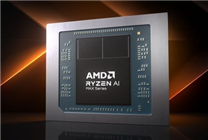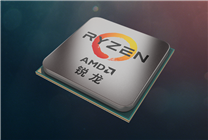AMD Stands Firm Amid NVIDIA-Intel Collaboration: A Closer Look at Future Developments
Key Takeaways
- AMD is confident in its competitive roadmap despite the unexpected collaboration between NVIDIA and Intel.
- The new partnership is set to introduce an x86 SoC equipped with an RTX GPU, intensifying market competition.
- AMD’s upcoming technologies, such as the Medusa Point APU and Gator Range, promise to innovate within the industry.
In a recent statement addressing the collaboration between NVIDIA and Intel, AMD has expressed unwavering confidence in its development roadmap. The news, which marks a significant shift in the tech landscape, emphasizes AMD’s commitment to delivering innovative solutions to the PC market.
The partnership between NVIDIA and Intel, aimed at creating an x86 System on Chip (SoC) integrated with an RTX GPU, signifies a formidable evolution in the industry. This new initiative poses an unexpected challenge for AMD, compelling it to reassess its competitive strategies. However, AMD executives remain upbeat about the company’s prospects in this rapidly changing environment.
AMD’s Vice President, Jason Banta, assured stakeholders that the company is well-prepared to face this new competition. “We are very confident in our roadmap,” Banta stated, highlighting the excitement surrounding AMD’s upcoming offerings. “The ‘Strix Halo’ products we have introduced represent groundbreaking advancements, and we are committed to continuing this trend of delivering disruptive technology to the market.”
AMD’s technology has already gained substantial traction among various manufacturers, particularly in the laptop, mini PC, and handheld device sectors. As a result, the company boasts a diversified product portfolio that leverages its robust System on Chips (SoCs). This widespread adoption lays a strong foundation for AMD as it navigates intensified competition spurred by the Intel-NVIDIA alliance.
Industry insights suggest that NVIDIA CEO Jensen Huang anticipates the new chip architecture will pave the way for integration into 150 million laptops, illustrating the potential scale of this collaboration. Such forecasts raise the stakes for AMD, pushing them to refine their approach and expedite the rollout of new products.
Banta reiterated AMD’s commitment to innovation, saying, “We are confident that our product lineup in laptops, desktops, handheld devices, and other form factors will keep us competitive.” This focus on delivering high-quality, innovative solutions positions AMD to not only compete but also thrive amid growing market pressures.
As AMD looks to the future, the launch of the Medusa Point APU in 2026 and the Gator Range in 2027 are pivotal milestones. These forthcoming products will be built on the next-generation Zen 6 CPU architecture, signaling AMD’s intent to usher in a new era of performance and efficiency.
In conclusion, while the collaboration between NVIDIA and Intel undoubtedly reshapes the competitive landscape, AMD’s proactive measures and product roadmap underscore its resilience. The company’s commitment to disruptive technologies and market leadership is likely to keep it at the forefront of the industry. As developments continue to unfold, all eyes will be on AMD to see how it adapts and evolves in response to these external challenges.








